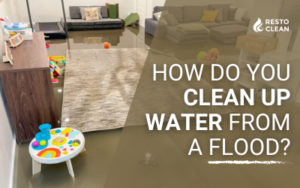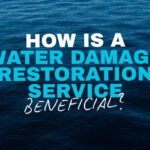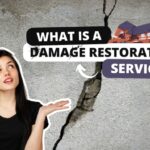
Imagine this. You wake up one day to rain tapping against your windowpane. It’s a typical rainy season in your small town, and you’ve grown accustomed to the seasonal showers. You get ready for the day, and as you step outside, you notice that the streets are slightly more flooded than usual. The river that runs through your town has swelled to its highest level in years, and the storm drains, and sewers are struggling to keep up with the downpour. You think it’s nothing to worry about, but before long, the water has risen to several feet and slowly creeps toward your home.
Townspeople fight to save homes and businesses as water engulfs the streets. Sandbags and furniture moved high, but buildings still flooded. Chaos reigns as pets are rescued, and emergency services struggle to keep up.
Some people who have seen flooding firsthand may recognize this as more than a fictional account. Natural disasters like flooding can be incredibly devastating, causing significant damage to homes and properties. However, it is essential to note that while we cannot prevent such events from occurring, we can certainly take steps to prepare and minimize the damage they cause. Preparation is the key.
This blog post will provide suggestions for flood cleanup. We’ll cover everything from removing water to salvaging belongings and preventing mold. We’ll also discuss the importance of an emergency plan and the steps to protect yourself and your family during a flood.

How to Clean Up After a Flood: Practical Tips and Techniques
Floods can cause significant damage to homes and properties, leaving behind standing water, debris, and mud. Cleaning up after a flood can be daunting, but with the right tools, techniques, and preparation, you can get your home and life back on track. Here is a list of practical tips and techniques to clean water from a flood and minimize damage.
Remove standing water
To minimize the risk of mold and mildew growth, it is crucial to act quickly to remove standing water from your home after a flood or water damage. The first step is to focus on cleaning and drying your house as much as possible before the 22-48 hour window for mold build up.
If the water is confined to a specific area of your home, preventing it from spreading to other rooms is crucial, particularly if you have wood floors. In case of access to power, you can use a wet-dry vacuum or a sump pump to extract water from floors, carpets, and hard surfaces.
If you do not have power, you can quickly remove the water using absorbent materials like towels or comforters. A mop can also be used to soak up as much water as possible, and a squeegee can be employed to push water toward your porch or garage.
Dry out the area
After removing the standing water, dry the area using dehumidifiers, fans, and heaters. This will prevent mold growth and further damage to your home. Open windows and doors to promote ventilation and allow air to circulate.
Water damage can occur rapidly, so it is important to identify the areas of your home that need protection. Porous surfaces, including sheetrock, baseboard, and wood, are prone to absorbing water. It is advisable to focus on cleaning these materials first to mitigate damage. It is an ideal outcome if you can save your flooring or walls from water damage.
A wet-dry vacuum may be used for drywall with minimal water damage. While this may cause some damage to the walls, it is preferable than replacing the drywall completely. Blotting the walls with large towels is also viable for collecting moisture.
In the event of severe water damage from flooding, your drywall may not be salvageable. Experts recommend creating holes in the drywall to allow water and moisture to escape, as it will need to be replaced regardless.
Clean and disinfect
Once the area is dry, it’s time to clean and disinfect. Be sure to wear gloves and a mask. Household cleaners help eliminate dirt and debris left behind by floodwater. Disinfectants, on the other hand, help to prevent the spread of disease-causing microorganisms that may be present in the water. Using powdered or liquid cleaners instead of aerosol products is recommended as they are more cost-effective for larger areas that require cleaning.
It is important to note that not all products are suitable for all uses, and specific directions should be followed as indicated on each product’s label before use.
Dispose of debris
Once the water has been removed from your home, it is important to assess the extent of damage to your furniture and personal belongings. You can begin by separating the items into two piles: one for salvageable items and another for those beyond repair.
It is important to note that paper products, food, and electronics that have been water-damaged are typically unsalvageable and should be discarded. However, upholstery and rugs may have a chance of restoration or cleaning, but it is important to seek professional assistance promptly.
Prevent future flooding
While preventing floods caused by natural disasters may be challenging, there are ways to keep them from entering homes. Installing flood barriers is an effective measure for individuals and communities to divert water away from structures. Flood barriers made of materials like sandbags, concrete, or steel can be used for this purpose.
Installing sump pumps to remove water from basements and crawl spaces is another effective measure to avoid flooding. Additionally, sealing foundation cracks is essential in preventing water from seeping in.
Aside from those measures, keeping gutters and drains free of debris is crucial. When gutters and drains are blocked, water can overflow and cause flooding. Regular maintenance of gutters and drains can help prevent this from happening.
Coping with Water Damage from Flood?
Dealing with a flooded home can be challenging, as water can cause severe damage to your property in a short amount of time. While it may be tempting to try and tackle the cleanup process independently, seeking professional help is often the best course of action.
Resto Clean offers cleaning services in Wasilla. We have the necessary equipment, expertise, and experience to evaluate the extent of the damage and implement effective solutions to restore your home.
We understand the importance of prompt action in preventing further damage caused by prolonged exposure to water. We can quickly dry out your home and take measures to prevent mold growth. If mold growth has already occurred, our team can safely and efficiently remove it from your home.
Trust Resto Clean Wasilla to restore your home to its pre-flood condition. Contact us today!





